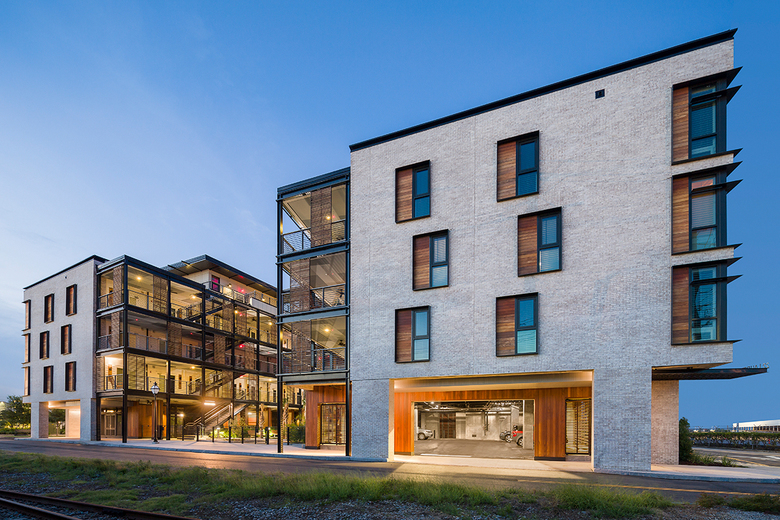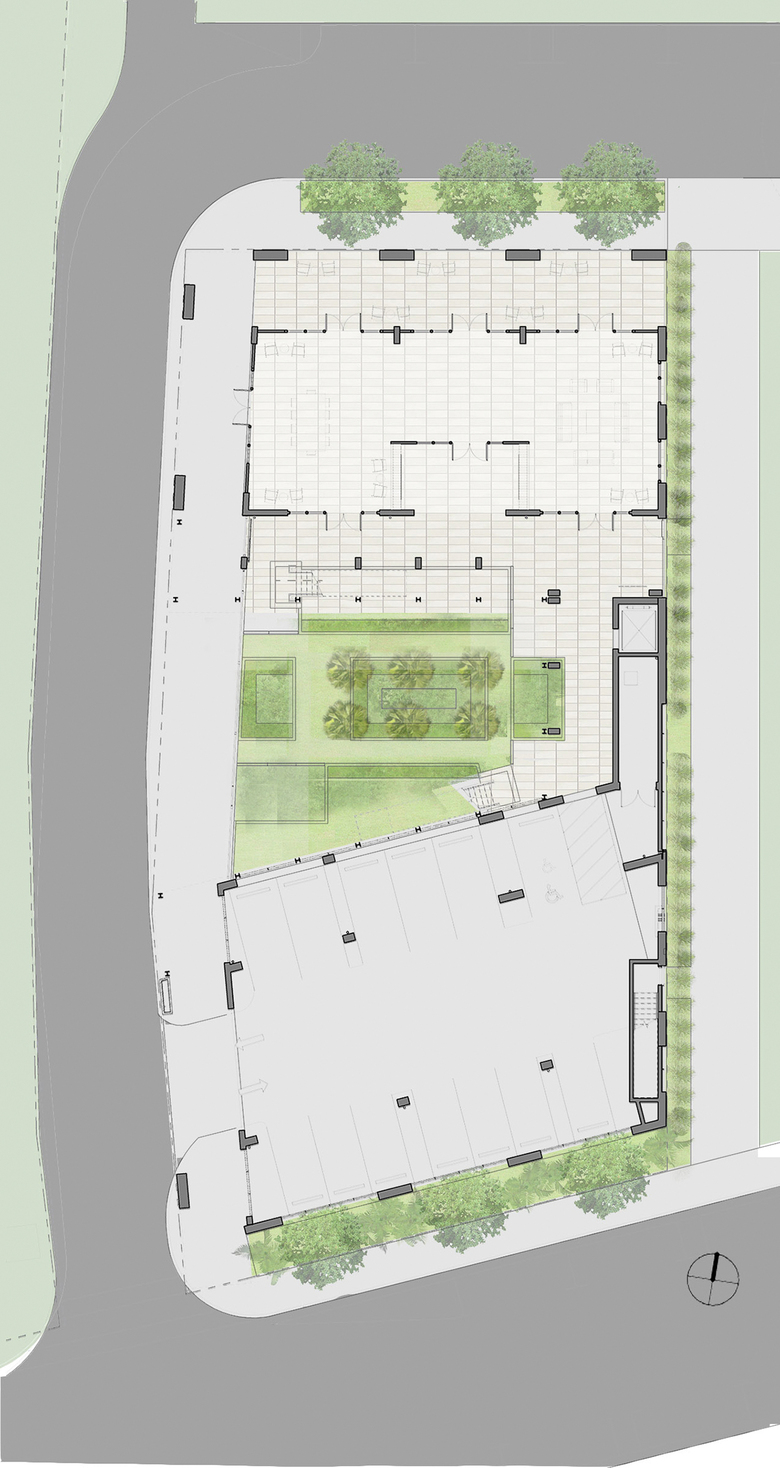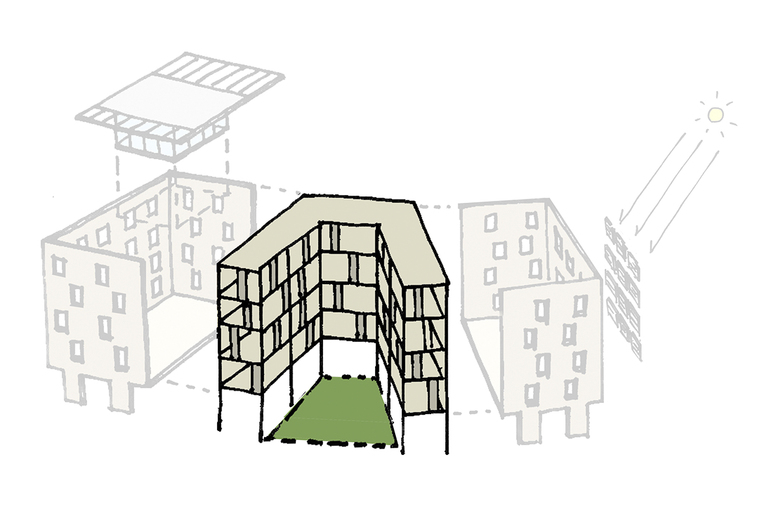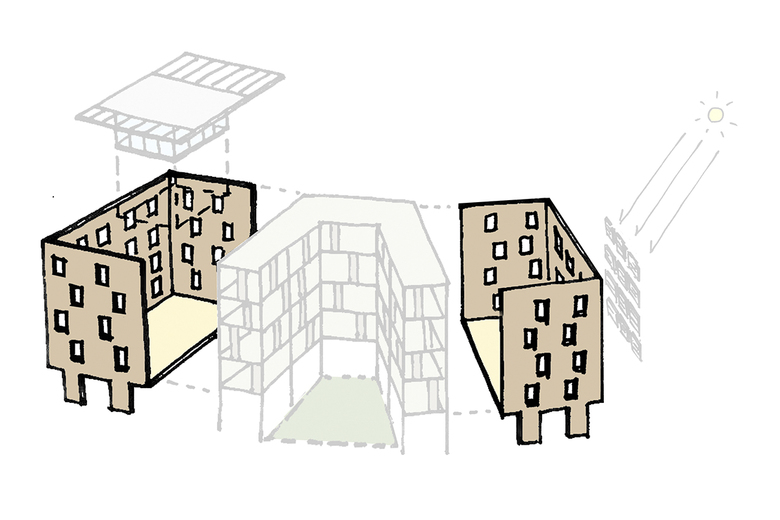U.S. Building of the Week
Williams Terrace
David Baker Architects
22. April 2019
Photo: Chris Luker
Located on the eastern edge of the Charleston Historic District, just steps away from the planned International African American Museum, Williams Terrace is the South Carolina city's first dedicated low-income senior housing project. David Baker Architects sent us some text and images on Williams Terrace.
Location: Charleston, South Carolina, USA
Client: Housing Authority of the City of Charleston
Design Architect: David Baker Architects
Architect of Record: McMillan Pazdan Smith Architecture
Landscape Architect: Wertimer + Cline Landscape Architects
Building Area: 47,851 sf
Site Area: 18,274 sf
View across Gadsdenboro Park (Photo: Chris Luker)
Williams Terrace Senior Housing is the first dedicated housing for low-income seniors in the city of Charleston, South Carolina. DBA collaborated with local firm McMillan Pazdan Smith to create this gracious senior building, which finally replaces affordable family housing destroyed in a 1989 hurricane.
View from the south (Photo: Chris Luker)
The design team worked closely with the Housing Authority of the City of Charleston to create a dynamic building that meets the challenges of the site — located in a high-velocity flood zone — and respects the gracious built fabric of downtown historic Charleston.
The courtyard is ringed by porches that are inspired by the Charleston's traditional single house piazzas. (Photo: Chris Luker)
The building’s ground-level “screen porch” fronts the new public park and connects directly to it via a shaded public sidewalk. This allows for an active ground floor despite the City requirement that no permanent uses can be located at ground level. The restriction arises from the being a flood zone, with a velocity component, so all at-grade uses need to be impermanent and able to be swept away cleanly in case of a hurricane.
View of the central entry courtyard from an upper-level porch (Photo: Chris Luker)
Williams Terrace takes inspiration from Charleston's Single Houses, characterized by their open-air piazzas, which function in a similar way to porches. We interpreted this concept with wide, open-air corridors that function as external circulation as well as gathering and social spaces for senior residents. These deep porches provide opportunities for connection and are lined with seating to encourage interaction among residents.
The porches are dotted with wooden rocking chairs and have movable slatted shades to protect from the sun over the course of the day. (Photo: Chris Luker)
Taking a cue from the historic louvered shutters found on Charleston’s piazzas, we included sliding screens to allow residents to adjust the amount of shade desired. These dynamic louvers make for an ever-changing façade. The lime-washed brick exterior offers another connection with Charleston’s historic past.
Wide porches that double as circulation offer places to sit, meet in passing, and personalize a bit of outdoor space. (Photo: Chris Luker)
To avoid flood damage, the community room is located on the roof, which frames wonderful views across historic Charleston. The homes, porches, and rooftop community terrace enjoy views across the new park toward the Charleston harbor.
The rooftop terrace overlooks a new park, with views out to the Cooper River and the Arthur Ravenel Bridge. (Photo: Chris Luker)
The one bedroom apartments are version of the southern "shotgun" typology: living areas fronting the circulation porches, the "piazzas," with bedrooms facing out. This allows for great social interaction for the senior community, and through ventilation in every unit.
Apartments connect to the wide circulation porches, which have room for some personal touches. (Photo: Chris Luker)
Site Plan (Drawing: DBA)
Third Floor Plan (Drawing: DBA)
The open porch circulation is a traditional Charleston Single House element, known as a piazza. (Diagram: DBA)
Sliding shutters will provide adjustable shading for the multi-level circulation porch. (Diagram: DBA)
The residential walls are clad in traditional lime washed brick. (Diagram: DBA)
The community room and terrace are located on the roof to comply with the flood zone and maximize the views. (Diagram: DBA)
Composite (Diagram: DBA)
Related articles
-
Wilbur O. and Ann Powers College of Business
on 5/23/22
-
Perpetual Spring Pavilion
on 2/9/21
-
Williams Terrace
on 4/22/19
-
Duke University Student Wellness Center
on 10/23/17















